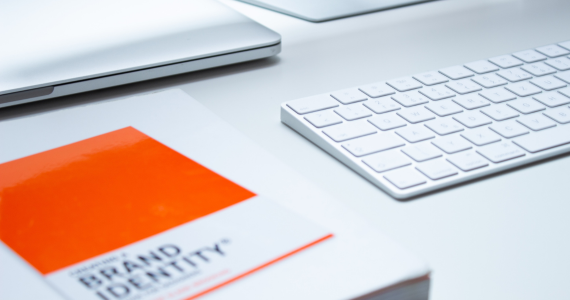Key aspects of your business IP such as logos and branding shouldn’t be left vulnerable to theft or imitation. Here’s exactly what’s at risk.
As a small business owner, it’s easy to become overwhelmed by the sheer amount of information you need to process on a daily basis.
From providing excellent products or services, to meeting marketing requirements, to making sure you’re on top of your financial and tax requirements — it’s a lot to keep track of.
So, when it comes to trade marks and IP protection, it can feel like the straw that broke the camel’s back.
The good news is you don’t have to get your juris doctor to understand the basics of trade marks for small business and what’s at stake should you not get one.
Here’s what you need to know.

What is trade mark protection?
A trade mark is — essentially — the legal protection given to a brand. This is usually its business name or logo, but it can be any recognisable image, design or expression that identifies a business. It’s how your customers (and potential customers) distinguish your business from your competitors.
Trade mark law aims to protect businesses and prevent confusion among consumers by setting aside a recognisable element for the sole use of that business. It stops others from intentionally capitalising on your business’s good name and reputation. It also reduces the chances of another business innocently or mistakenly using a similar name or logo.
The best way to protect your business is by registering your trade mark on a public database.
While it is possible to protect an unregistered trade mark in some countries, including Australia, the process is far more challenging and is likely to cost you significantly more in terms of time, stress and money.
Keep in mind that business names and domain names aren’t considered forms of intellectual property. Your name registration alone won’t protect your brand identity the way a registered trade mark will.
What’s at risk without trade mark protection?
Trade mark protection isn’t just for the big players in a market. In fact, it can be just as important for small to medium-sized businesses, too.
That’s why it may come as a surprise that less than 1.3 percent of Australian small businesses own a trade mark for their brand.
If you don’t have trade mark protection, your business could be at risk in multiple ways.
Knowing what trade mark protection is, is just the first step. As a small business it’s vital to understand why it’s important and what your possible risks might be.
We spoke to Senior Examiner and Trainer for IP Australia, Sarah Hope for some insights.
Your brand name/logo
Hope says that if a competitor registers a trade mark that is similar to your business’s unregistered trade mark, they have the exclusive right to use, license and sell the mark.
More importantly, they may try to stop you from using yours.
“You would then have to prove that you were the first to use the trademark, which can be expensive and time-consuming,” she explains.
Should you fail, it could cost you your business name, logo and more – and you would have to completely rebrand your business.
Your business reputation
If you’ve spent years working hard to satisfy your customers, earn positive recommendations and gain a solid position within your industry, then your great reputation will be intrinsically entwined with your brand name and logo.
Every happy customer and excellent review has added to the value of your business’s trade mark.
But if you don’t protect your trade mark and are later forced to rebrand, you could also lose your good reputation with it.
Similarly, if another company attempts to trade under a similar name or logo, and benefit from your hard work (without offering products/services to the same standard), this will also cost you your good reputation.
“If you do not register your trade mark, it will be more difficult to enforce against copycats,” said Hope.
“This is because of the greater burden of proof in demonstrating that their business has acquired a significant reputation in the relevant industry.
“Trade mark registration acts as a deterrent to would-be copycats infringing your rights and is a more simple and inexpensive way to prove trade mark ownership.”
Hope gives the example of Australian brand Wheely Bug, which applied to trade mark the design of their iconic ride-on toys after a number of copycat products appeared in the market. Today, their 3D trade mark and design registrations help make sure counterfeit products doesn’t reach the Australian market.
If you don’t have a registered trade mark when you discover copycat versions of your products, you may be able to rely on common law ‘passing off’, or misleading and deceptive conduct, under the Australian Consumer Law. But protection isn’t automatic and the process can be challenging.
Commercial benefits
Hope says that failing to register your trade mark means you risk missing out on other key commercial benefits for your business.
“A registered trade mark is a valuable business asset that can help attract investors, especially in the early stages of your business,” she explained.
“You can also license your trade mark to another business for a fee or under a royalty agreement, or sell your trade mark.”
IP Australia’s 2022 Australian Intellectual Property Report found SMEs that file for patents, trade marks and design rights are two times more likely to achieve high turnover growth. They also employ 3.5 times as many people, pay a higher wage and are 16 percent more likely to experience high employment growth.
Time, money and mental health
When you do face an infringement of your name, products or services, you’ll likely need to seek legal recourse. Unfortunately, this isn’t a fast or easy process.
Pursuing a legal outcome demands endless patience, time, mental energy and (of course) money. And, if you should fail in your bid, the rebranding process can be very costly and time consuming — not to mention any litigation costs of trade mark infringement.
Hope offers a real-life example.
“A number of small business owners in Australia using the name The Fat Duck faced legal action from UK chef Heston Blumenthal’s legal team, even before he obtained trade mark registration in Australia.
“The owner of Melbourne’s former Fat Duck Café chose to change the name of her café to The Loose Goose rather than engage in an expensive legal battle.
“Blumenthal’s company also took Sydney’s former The Fat Duck restaurant to court and won, meaning that the restaurant had to change their name and pay costs.”
She also underscored that, whether it goes to court or not, any dispute can take a significant toll.
“Changing your business name and branding can still cost a business owner thousands of dollars and cause confusion among customers,” she said.
Hope’s trade mark advice for small businesses:
-
A business can apply to register a trade mark at any time — the sooner, the better. The earlier you apply, the earlier your ‘priority date’, which means your application will be given priority over a competitor’s similar trade mark
-
Trade mark registration lasts for 10 years from its filing date
-
As an owner of a registered trade mark, you must actively use your trade mark, in the course of trade, on the goods and services listed in your application. If you don’t, it can be removed on the grounds of non-use
-
You can use the ‘priority date’ of your Australian trade mark application on an international trade mark application, if you file the latter within six months
-
Head to the IP Australia website for more information, tools and resources to help you manage your IP
Registering a trade mark
If you’re ready to get started with obtaining a trade mark, Hope suggests the following steps:
-
Decide exactly what you’d like to trade mark
-
Thing about the goods and services you’ll be using your trade mark on
-
Use IP Australia’s national trade mark search to check if the trade mark has already been registered for similar goods or services
-
When you’re ready to apply get the help of an expert. You can use IP Australia’s standard application service (total cost starts at $250) or its pre-application service, TM Headstart
What if you’ve already been copycatted?
If you’ve already been copycatted you’ll need to start enforcing your rights.
While this is much easier if you have a registered trade mark behind you, there are steps you can take even if you haven’t.
Get all the info you need in our guide, “So you’ve been copycatted?”
Source: MYOB November 2022
Reproduced with the permission of MYOB. This article by Renae Smith was originally published at https://www.myob.com/au/blog/risks-of-no-trade-mark-protection/
Important:
This provides general information and hasn’t taken your circumstances into account. It’s important to consider your particular circumstances before deciding what’s right for you. Although the information is from sources considered reliable, we do not guarantee that it is accurate or complete. You should not rely upon it and should seek qualified advice before making any investment decision. Except where liability under any statute cannot be excluded, we do not accept any liability (whether under contract, tort or otherwise) for any resulting loss or damage of the reader or any other person.
Any information provided by the author detailed above is separate and external to our business and our Licensee. Neither our business nor our Licensee takes any responsibility for any action or any service provided by the author. Any links have been provided with permission for information purposes only and will take you to external websites, which are not connected to our company in any way. Note: Our company does not endorse and is not responsible for the accuracy of the contents/information contained within the linked site(s) accessible from this page.


